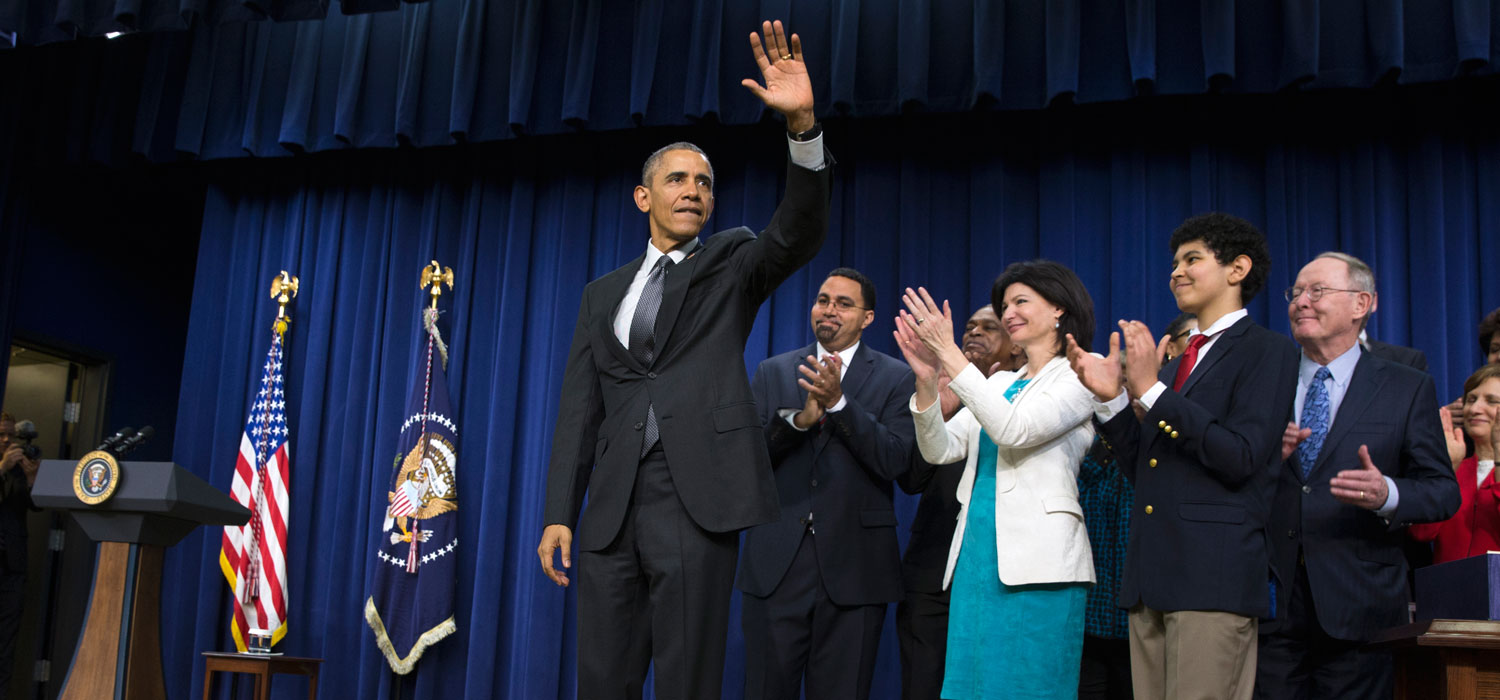
Today, President Obama signed the Every Student Succeeds Act (ESSA) into law after the legislation sailed through the House and Senate with broad bipartisan support. ESSA replaces No Child Left Behind (NCLB) as the latest reauthorization of the 1965 Elementary and Secondary Education Act, and discussion around this version of the bill has largely focused on shifting federal control over education to the states.
While reactions to ESSA have largely been relief over the end of NCLB, there are sections of the new law focused on the creation and use of evidence that represent an important positive step for education policy. As the name of the law implies, ensuring that “every student succeeds” is a foundational goal of our education system. How we go about ensuring such success is the challenge. ESSA builds upon the work of the past two administrations to focus resources on the difficult process of figuring out what works best and for whom.
Using research to design better education policies and programs
In order to improve outcomes for children, we need a better sense of what works. In order to know what works, we have to develop programs based on what we think is effective and evaluate the programs to see if we are right. Finally, as the results of those evaluations come back, we need to adapt programs to improve their efficacy, scale effective programs so that they can benefit more children, and end programs that appear to lack promise for long-term impact.
ESSA is the latest in a series of efforts to expand government investment in outcomes-focused, rigorously evaluated programs. What makes ESSA unique is the consistent aim to build the supply of evidence-based programs through new research, as well as increase the demand for such programs through new policy—and putting some real money (i.e., billions of dollars across dozens of programs) behind the efforts.
Investing in evidence
On the supply side, ESSA contains explicit authorized funding to increase investment in building evidence for promising programs and scale what works.
For example, the law authorizes $300 million in funding for the Education Innovation and Research (EIR) grants program by the end of fiscal year 2020.
Similar to the Investing in Innovation Fund, EIR’s tiered evidence approach will direct funding for early-stage grants for newer programs to test their feasibility, mid-phase grants to fund rigorous evaluations of promising programs, and expansion grants to figure out the best ways to scale strong programs. The range of investments demonstrates how different programs fall along different stages of evidence-building, and that finding programs that can achieve outcomes in multiple places with different populations is a long-term goal.
ESSA also directs new spending on evaluation, delegating 0.5 percent of funding for programs not already subject to evaluations to the Secretary of Education solely to conduct them.
On the demand side, ESSA has laid groundwork for future investment in more evidence-based programs. Perhaps ESSA’s most symbolically significant evidence-based provision is actually defining the term. The law establishes standards for evidence-based interventions at four levels, ranging from well-designed experimental evaluations to theories based on high-quality research.
The standards are included in ESSA for good reason. The legislation makes more than $2 billion available for programs—in literacy education, family engagement, educator development, and several other policy areas—that meet these evidence standards.
In addition, the law allows for school districts to invest funds in pay for success initiatives. Pay for success is an innovative financing mechanism that could further spur investment in strong research-based programs because payments are directly tied to the demonstration of improved outcomes, rather than the provision of services.
What’s next for ESSA?
There is still important work ahead for the implementation of ESSA’s evidence policy. First, the definition of an “evidence-based” program in ESSA encompasses a broad range of evaluative approaches. The Department of Education should include preferences for programs with the strongest evidence to incentivize investments in what works.
Second, the gap between federal legislative language on evidence and state and local interpretation may be large. There will be a need for evidence translators to interpret the research.
Finally, further specification about the types of programs that are ready for inclusion in pay for success education projects will be important as local districts start to explore those opportunities.
Overall, the push to increase the supply and demand of research-backed programs in education is an important step towards greater evidence-based policymaking at the federal level. Last year’s Workforce Innovation and Opportunity Act provided millions of dollars in funding for evidence-based programs. ESSA has expanded on this legislation with billions of funding directly in evidence-based programs, signaling a growing appetite on the Hill for evidence and evaluation.
Tune in and subscribe today.
The Urban Institute podcast, Evidence in Action, inspires changemakers to lead with evidence and act with equity. Cohosted by Urban President Sarah Rosen Wartell and Executive Vice President Kimberlyn Leary, every episode features in-depth discussions with experts and leaders on topics ranging from how to advance equity, to designing innovative solutions that achieve community impact, to what it means to practice evidence-based leadership.